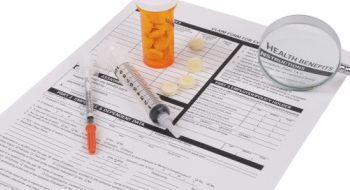

Using mandatory generic substitution when designing a benefits plan can help to control drug costs, but what measure of control can be offered when a brand name drug has no generic equivalent?
If the single source brand drug has no generic equivalent—perhaps nothing. If the brand name drug has a therapeutic substitute that delivers a less expensive alternative—perhaps everything.
A thorough review of a sponsor’s plan may reveal still untapped potential for cost savings using generic therapeutic substitution.
An example of this can be found with the anti-depressant drug Cipralex (20 mg., approx. $1.86 per pill). While the molecule used in Cipralex is unique and has no equivalent (generic or brand), it has a lower-cost therapeutic alternative in the drug Citalopram, the generic form of Celexa (40 mg., approx. $0.46). Both drugs belong to the same class of anti-depressants called selective serotonin re-uptake inhibitors (SSRI) but have different active ingredients.
An employer considering a plan design with therapeutic substitution options could allow for the use of the brand name original but encourage the use of therapeutic alternatives by covering a higher percentage of the lower-cost generic drug in the same therapeutic class. The higher-priced brand name drug will require a higher portion to be paid by the member versus the lower-cost therapeutic alternative.
Other examples are shown in the table below.
| Drug Classes | Standard100% Coverage* | Second Tier 50% Coverage |
| Anti-depressants | CitalopramParoxetineSertraline | Cipralex |
| Reflux/Heartburn | OmeprazoleLansoprazoleRabeprazole | Prevacid Fas TabTectaNexium |
| Hypertension | CandesartanLosartanValsartan | MavikOlmetecTarka |
| Anti-inflammatory | MeloxicamDiclofenac | AthrotecCelebrex |
This list is for illustration purposes only and is not a full representation of all brands and or therapeutic classes.
This is a partial listing of some commonly prescribed brand name drugs that have lower cost therapeutic alternatives. Please note how the brand name products have been covered at only 50%, while the lower cost therapeutic alternatives receive 100% coverage.
The plan sponsor and member will, in a sense, save twice. First, there is a difference in cost between the two pharmaceutical products being considered. Second, the plan design modifications drive further savings in the nature of the wide differential between the co-pays of the two tiers of drugs being compared
Plan sponsors have complete control over the size of the differential payment in plan design and hence their own levels of savings. Also, the member becomes aware of the integral role they play in managing plan costs by being prompted to ask their doctor and pharmacist if any lower cost alternatives are available.
What’s needed
Operating such a program required a managed formulary where the clinical teams at the carrier of the health benefits manager must monitor drugs currently offered and those that are coming to market to maximize these substitution opportunities.
It would be up to the plan sponsor and their advisor to analyze the current drug spend data to see where these opportunities could be applied and then determine whether or not it makes sense to do so.
Why bother?
The cost savings of therapeutic substitution may provide drug savings between 4% to as much as 10% of a company’s total experience. This range depends on the nature of plan design and the presence of co-pays and deductibles.
Plan cost savings are driven by the cost differences between the tiers of drugs considered and their associated and established co-pay levels. Generous plans with very little difference in co-pay amounts may deliver savings at the lower end of the range described above. Plans with greater co-pay differentials may deliver savings at the upper stated range.
Using the example provided earlier, if Cipralex was reimbursed in full (approx. $1.86) the economic loss to the plan would as much as 300%, representing the difference in price between the lower cost alternative and the brand name.
If reimbursement for the brand name drug were to include a co-pay of 50% the costs to the plan for Cipralex would now be $0.93, still twice the cost of the lower cost therapeutic alternative Citalopram at $0.46, and the member would enjoy full cost reimbursement for their prescription.
Clearly, operating this type of program requires patients and their physicians to be in the loop. Members and their physician become an active and integral player in the decision-making process and help manage the costs of their own healthcare. Real cost savings can be found for both the plan and the member in instances where therapeutic substitution can be applied without negatively impacting patient health.
Bob Carter is director of sales for a major pharmacy, health and dental benefits manager. B.Carter@Claimsecure.com
